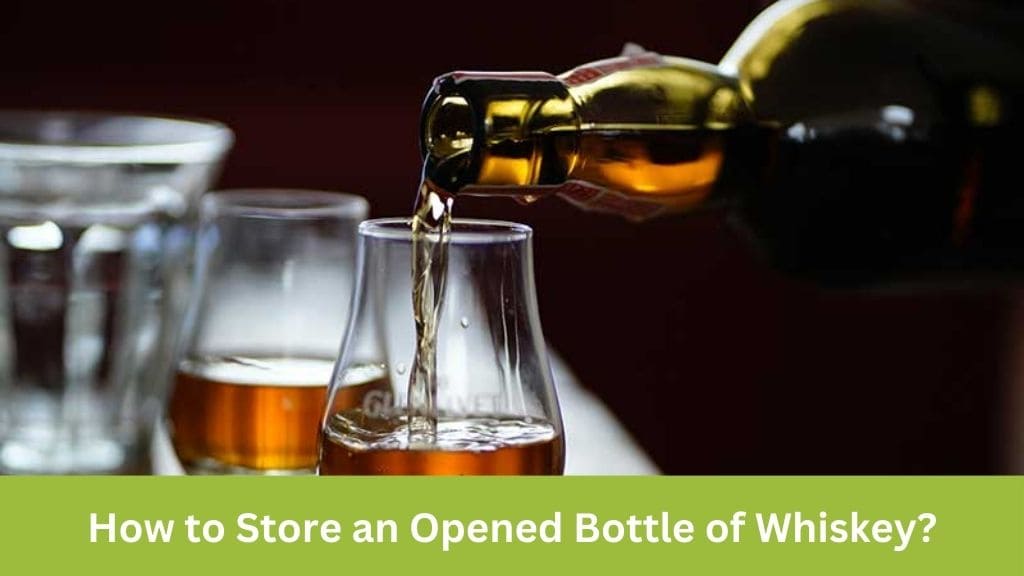Whiskey, with its complex flavors and aromas, is a beverage best enjoyed slowly and savored over time. But what happens once you’ve cracked open that prized bottle? How do you ensure that the whiskey maintains its original character and quality for as long as possible? In this comprehensive guide, we’ll explore the art of storing an opened bottle of whiskey to preserve its flavor and integrity.
Before diving into storage techniques, it’s essential to understand why storing an opened bottle of whiskey presents a unique challenge. Unlike unopened bottles, which are sealed and protected from external factors, once you break the seal, the whiskey is exposed to oxygen, which can gradually alter its taste and aroma.
Factors Affecting Whiskey Storage
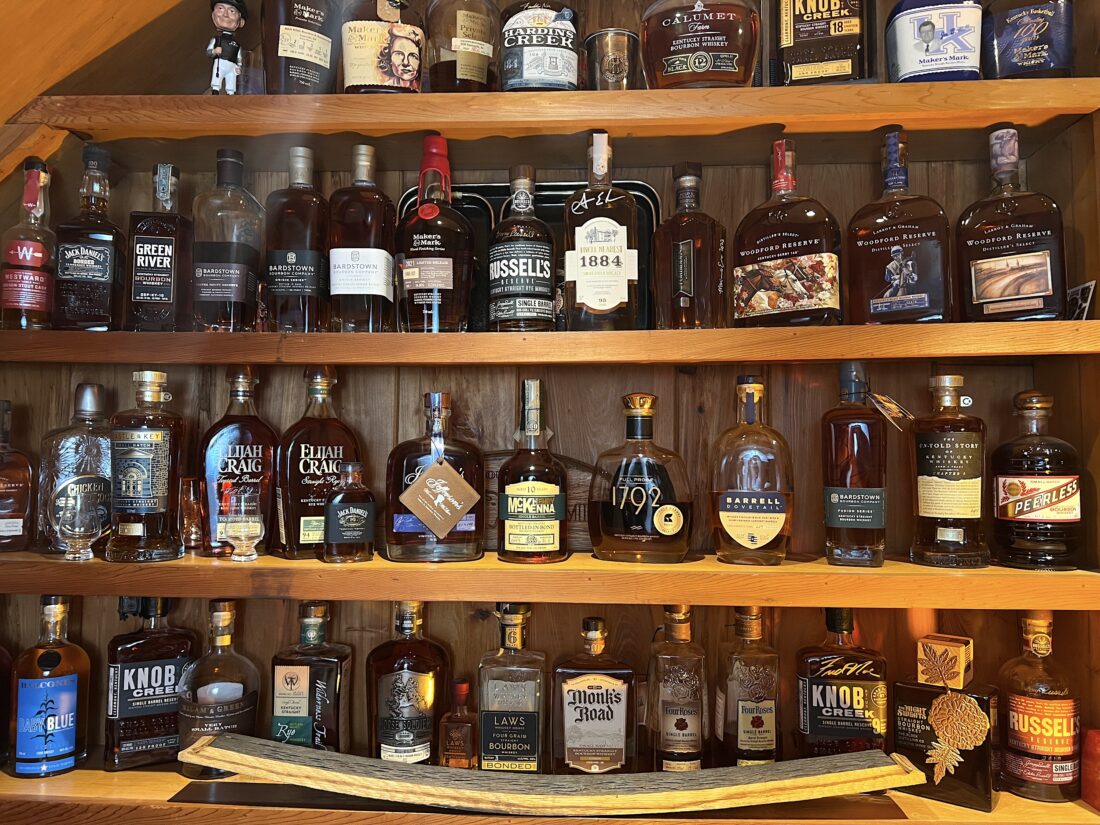
Several factors can impact the storage of opened whiskey, including:
How to store unopened whiskey bottles?
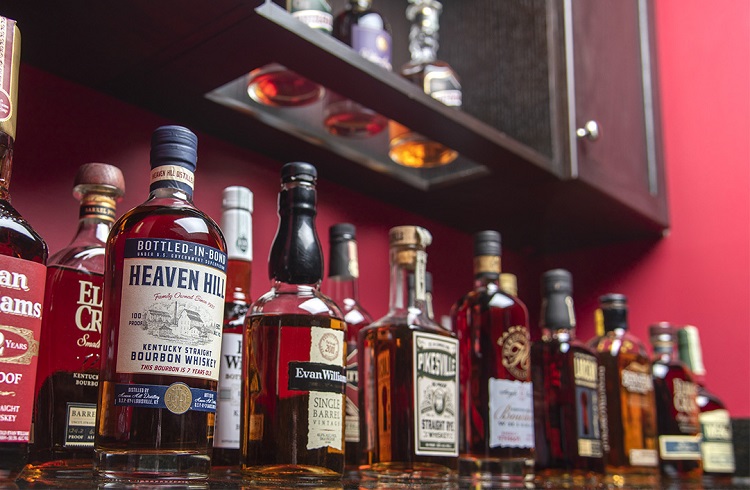
Storing unopened whiskey bottles requires careful consideration to maintain the integrity and quality of the spirit over time. Here’s a guide on how to store unopened whiskey bottles effectively:
1. Choose the Right Environment
Select a storage location that is cool, dark, and dry. Avoid areas with direct sunlight exposure, as UV rays can degrade the whiskey’s color and flavor over time. Ideally, the storage temperature should remain consistent, ranging between 15-20°C (59-68°F).
2. Keep the Bottle Upright
Store the whiskey bottle upright to prevent prolonged contact between the liquid and the cork. This helps preserve the integrity of the cork and prevents it from drying out or crumbling over time. Avoid laying the bottle on its side, as this can lead to cork deterioration and potential leakage.
3. Maintain Humidity Levels
While whiskey should be stored in a dry environment, it’s important to maintain moderate humidity levels to prevent the cork from drying out. Aim for a humidity range of 50-70% to keep the cork in optimal condition and minimize the risk of air exposure.
4. Avoid Temperature Fluctuations
Fluctuations in temperature can accelerate the aging process of whiskey and affect its flavor profile. Try to store the bottles in a location where the temperature remains relatively stable, avoiding extreme heat or cold. Sudden changes in temperature can cause the liquid to expand and contract, potentially compromising the seal of the bottle.
5. Consider Storage Options
Invest in storage solutions designed specifically for whiskey bottles, such as drink cabinets, racks, or shelves. These options not only provide a convenient and organized way to store your collection but also offer protection from external elements such as light and temperature fluctuations.
6. Check Seals Regularly
Periodically inspect the seals of your unopened whiskey bottles to ensure they remain intact and undamaged. A compromised seal can lead to air exposure and oxidation, affecting the quality of the whiskey over time. Replace any bottles with damaged seals to maintain freshness and flavor.
Best Practices for Storing Opened Whiskey
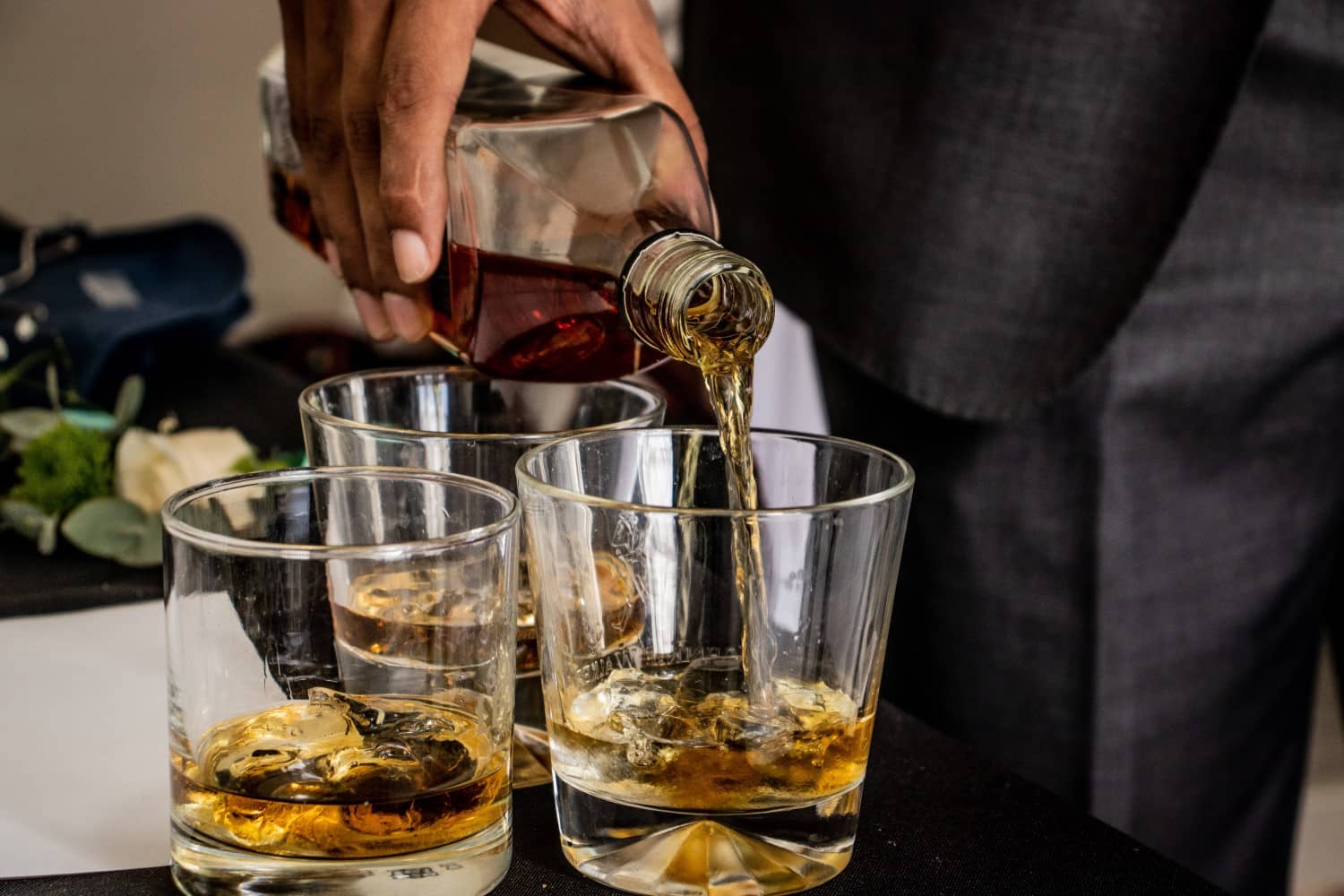
To preserve the flavor and integrity of your opened whiskey, follow these best practices:
1. Seal the Bottle Tightly
After pouring yourself a dram of whiskey, ensure that the bottle is tightly sealed to minimize exposure to oxygen. Oxygen can interact with the whiskey, leading to oxidation and changes in flavor over time. A snug-fitting cork or cap helps create a barrier that limits the amount of air that comes into contact with the whiskey, preserving its original character.
2. Store in a Cool, Dark Place
Similar to unopened bottles, opened whiskey should be stored in a cool, dark place away from direct sunlight. Exposure to light, especially ultraviolet (UV) rays, can accelerate the aging process of the whiskey and degrade its quality. By storing the bottle in a dark environment, you can help maintain the whiskey’s color, flavor, and aroma for longer periods.
3. Use a Wine Stopper or Vacuum Pump
If you don’t plan on finishing the bottle quickly, consider using a wine stopper or vacuum pump to remove excess air from the bottle. Oxidation occurs when whiskey comes into contact with oxygen, so minimizing the amount of air in the bottle can help slow down this process. A wine stopper creates a tight seal, while a vacuum pump removes air from the bottle, further delaying oxidation and preserving the whiskey’s freshness.
4. Consider Decanting
If you’ve consumed half or more of the whiskey in the bottle, consider transferring the remaining liquid to a smaller container, such as a decanter. A smaller container means less surface area exposed to air, reducing the rate of oxidation. Additionally, decanting allows you to present the whiskey in an elegant manner while protecting its flavor and aroma.
5. Avoid Temperature Fluctuations
Maintaining a consistent storage temperature is essential for preserving the quality of opened whiskey. Fluctuations in temperature can accelerate chemical reactions within the whiskey, leading to changes in flavor and aroma. Aim to store the bottle in a location where the temperature remains stable, ideally between 15-20°C (59-68°F). Avoid storing the bottle near heat sources or in areas prone to temperature fluctuations, such as near windows or heaters.
6. Store Upright
Unlike wine, whiskey should be stored upright to minimize contact between the liquid and the cork. Storing the bottle on its side can cause the cork to degrade over time, leading to potential leakage and oxidation. By storing the bottle upright, you can help maintain the integrity of the cork and ensure the whiskey remains properly sealed.
Common Mistakes to Avoid
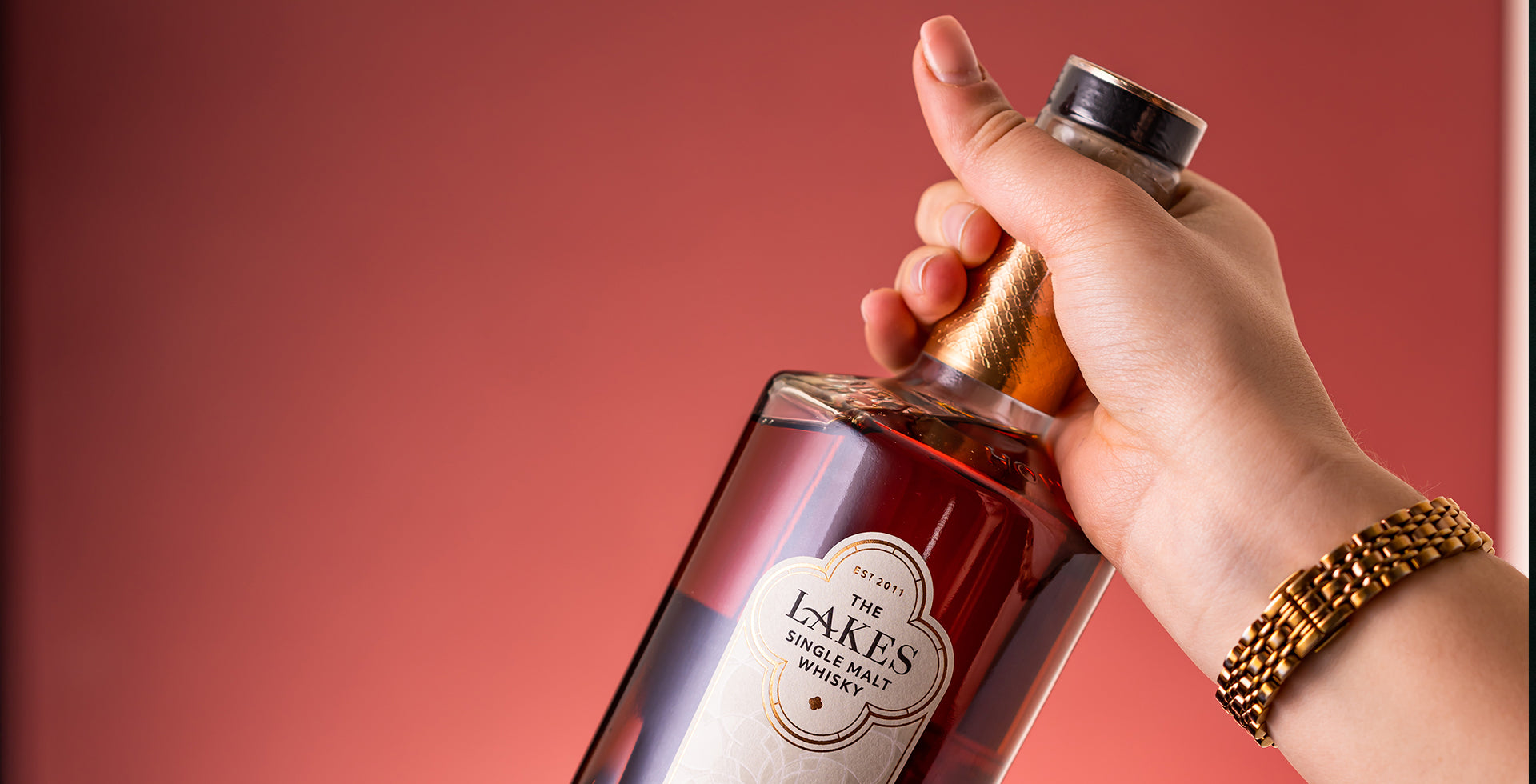
In addition to following the best practices mentioned above, be mindful of the following common mistakes when storing opened whiskey:
1. Leaving the Bottle Half-Empty
Leaving a bottle of whiskey half-empty exposes the remaining liquid to more oxygen, accelerating the oxidation process. As oxygen interacts with the whiskey, its flavor and aroma can change over time. To minimize oxidation, it’s best to finish the bottle or transfer the remaining whiskey to a smaller container, such as a decanter, to reduce the amount of air in contact with the liquid.
2. Storing in a Warm Environment
Exposure to high temperatures can speed up the aging process of whiskey and alter its flavor profile. Storing opened whiskey bottles in warm environments, such as near heaters or in direct sunlight, can accelerate oxidation and compromise the quality of the whiskey. To preserve its flavor and integrity, it’s essential to store whiskey in a cool, dark place with a consistent temperature.
3. Overhandling the Bottle
Frequent opening and closing of the bottle can introduce more oxygen and hasten the oxidation process. Each time the bottle is opened, air enters the container, leading to increased exposure and potential changes in flavor. To minimize oxidation, handle the bottle with care and avoid unnecessary opening and closing. When pouring whiskey, ensure the bottle is tightly sealed immediately afterward to limit air contact.
4. Ignoring Cork Condition
The condition of the cork plays a crucial role in maintaining the quality of opened whiskey bottles. Over time, corks can deteriorate, leading to air leakage and oxidation. It’s important to regularly inspect the cork for signs of damage, such as cracks or crumbling. If the cork is compromised, consider transferring the whiskey to a new container with a tight seal to prevent further oxidation and preserve its flavor.
5. Exposing to Strong Odors
Whiskey is highly susceptible to absorbing odors from its surroundings, which can affect its flavor and aroma. Storing opened whiskey bottles near strong-smelling substances, such as cleaning chemicals or spices, can taint the whiskey and alter its taste. To maintain its original character, store whiskey away from sources of strong odors in a dedicated storage area.
6. Neglecting Humidity Levels
While low humidity can dry out corks and lead to air leakage, excessive humidity can promote mold growth and degrade labels. It’s important to strike a balance and maintain moderate humidity levels (around 50-70%) to ensure the cork remains in good condition without risking label damage. Use a hygrometer to monitor humidity levels in the storage area and make adjustments as needed.
Conclusion
Storing an opened bottle of whiskey requires careful attention to detail to preserve its flavor and quality over time. By following the best practices outlined in this guide and avoiding common mistakes, you can enjoy your favorite whiskey for months or even years after opening. Remember to store the bottle in a cool, dark place, seal it tightly after each use, and consider decanting if the bottle is half-empty. With proper care and storage, your whiskey collection will continue to delight your palate for years to come.
I’m Chen Mina, from Vol de Nuit, who has a special passion for bartending, especially mixing wine, beer, and cooktail. Here you will find content about alcoholic beverages, I will bring you knowledge that few people know about this drink.

